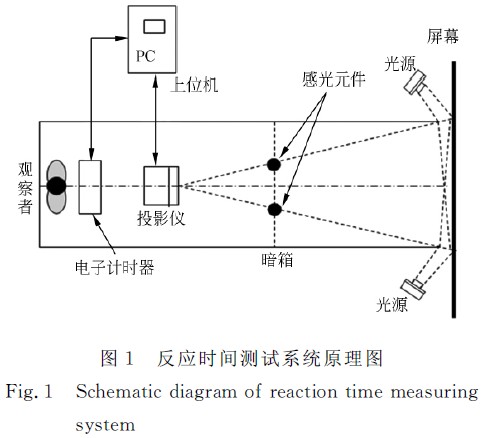With the rapid development of road construction and transportation industry in China, traffic accidents have become a potential danger in life. In 2010, there were 238,351 road traffic accidents, resulting in 67,759 deaths. Analysis of the causes of the accident found that road lighting quality is an important condition for accidents [1]; data from the International Electrotechnical Commission shows that the incidence of road accidents during the day is only one-third of the night [2]. It can be seen that the quality of night road lighting has become a hot issue related to the safety of the public life and property, while the night road lighting environment brightness level is generally 1.5cd/m2, which is in the middle vision category. It is generally considered that the illumination intensity is greater than 10 cd/m2 for the bright vision range, less than 0.001 cd/m2 for the dark vision range, and the state between the two is the intermediate vision. The brightness and illuminance of the current road traffic lighting regulations are determined under bright visual conditions, which cannot meet the needs of the development of actual road traffic safety lighting [3-4], but there is no formal intermediate visual spectral light function recommendation. .
Many research institutes at home and abroad have carried out research work on intermediate vision. The main methods include heterochromatic brightness matching method, scintillation photometry and visual function method. At present, the visual efficacy method based on reaction time is an ideal method for studying intermediate vision [5]. Visual effects are the ability of a person to complete a given visual work with the aid of a visual organ, which is often evaluated by the speed and accuracy of the work; it depends not only on the shape, orientation, homework and background light reflectance, but also on the brightness, contrast, etc. [6]. Studies have shown that as lighting improves, visual effects will improve; the quantitative relationship between visual effects and lighting can provide a visual basis for the development of road traffic lighting standards [1-2].
Research on visual effects at home and abroad mainly includes: establishing an intermediate visual environment in a closed environment, using optical principles to cast visual targets as stimuli to observers, and using Electronic Components such as electronic timers to record reaction time and its environment. Various data [7-8]. Due to the different experimental equipment and conditions of various research institutions, the methods used to simulate nighttime road lighting environment and collecting reaction time data are also different. At the same time, the reaction time data obtained by experiments of different ages are quite different. Therefore, this experiment adopts a relatively close to the actual road lighting environment, directly using the projection and background light source as the light source of the test environment to simulate road obstacles (optical signs) and road illumination sources; through the electronic timer pair composed of buttons and photosensitive sensors The reaction time data was collected and stored; and subjects with more consistent age and visual acuity were selected strictly to obtain more reliable data. By comparing the reaction time data with the background brightness, etc., the visual effects of High Pressure Sodium (HPS), Metal Halide (MH) and LED as road traffic illumination sources under intermediate vision conditions were compared.
2 test system composition and working principle
2.1 Test system hardware components
The reaction time test system developed based on visual power method is mainly composed of upper computer, electronic timer, projector, photosensitive element, light source, screen, black box, etc. [3-4], as shown in Figure 1.
PC PC: Installed with the optotype test solution setting software, the user sets the optotype test program, and connects with the projector to project the set background and the target to the screen to simulate the sudden obstacles on the road at night. Object. The host computer communicates with the electronic timer to receive and store the time data of the test.

Electronic timer: As shown in Figure 2, the core component is a single-chip microcomputer. By receiving the light sensor signal, the internal timer of the single chip microcomputer is turned on. By detecting the manual button signal, the reaction time is formed and recorded, and then the communication with the host computer is performed, and the reaction time data is obtained. Upload. The electronic timer has the function of displaying the collected reaction time.
Rigid-flex board is a circuit board with FPC characteristics and PCB characteristics formed by combining flexible circuit boards and rigid circuit boards according to relevant process requirements through lamination and other processes.
The rigid-flex board has both the characteristics of FPC and the characteristics of PCB. Therefore, it can be used in some products with special requirements. It has both a certain flexible area and a certain rigid area, which saves the internal space of the product and reduces the The finished product volume is of great help in improving product performance.
Rigid-Flexible Board,Rigid-Flexible Circuit Board,Rigid-Flexible PCB Fabricator,Rigid-Flexible PCB Manufacturer,Rigid-Flexible PCB Supplier
Huizhou Liandajin Electronic Co., Ltd , https://www.ldjcircuitboard.com